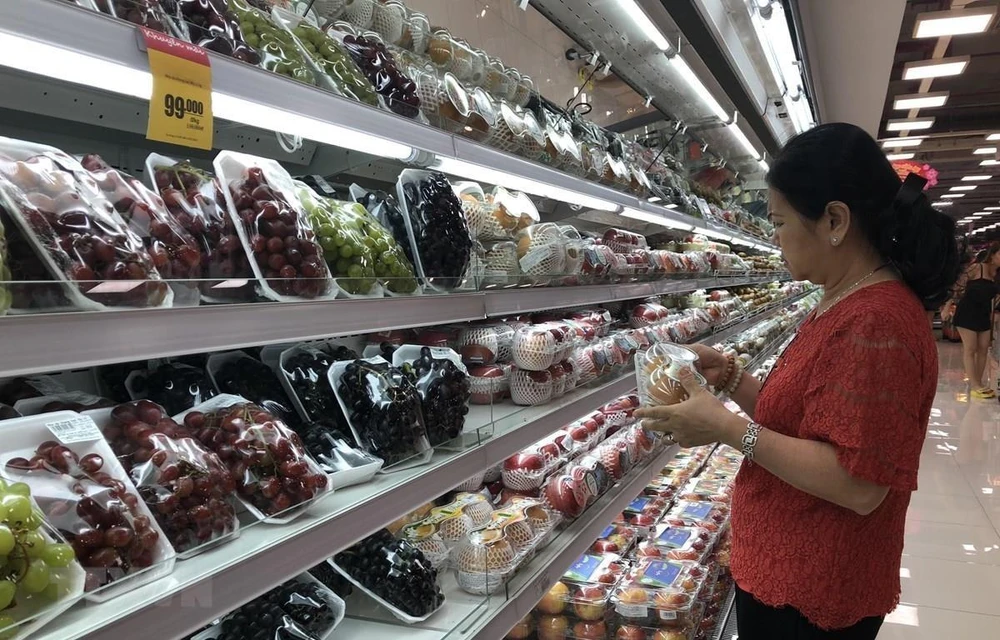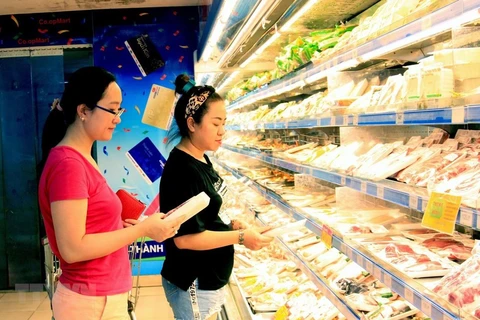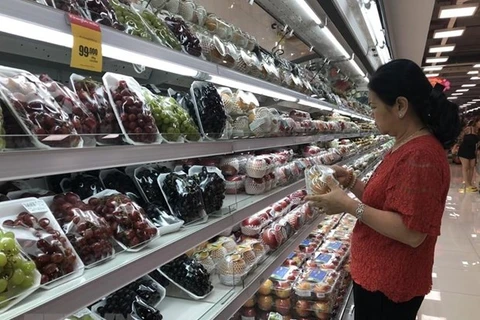
Hanoi (VNA) – Vietnam recorded a year-on-year rise of 2.5 percent in the consumer price index (CPI) during January-September, marking the lowest increase seen in three years, the General Statistics Office (GSO) announced on September 28.
CPI in September inched up 0.32 percent over the previous month, representing a 2.2 percent rise over the figure in December 2018, and a 1.98 percent increase from the same month last year.
The rise in educational services, impacts from African swine fever, and flooding in some localities were major factors pushing up the CPI in the month, head of the GSO’s Price Statistics Department Do Thi Ngoc said.
“However, the State Bank of Vietnam has been persistent with its flexible monetary policy, helping stabilise the macro-economy”, she explained.
She held that higher demand in the Lunar New Year in February led to an increase in prices of food and catering, transport and tourism services. Especially, a 4.21 percent rise in food price, including an 8.04 percent hike in pork price, pushed the CPI in the nine-month period up by some 0.34 percent.
According to report from the GSO, month-on-month increases were recorded in eight out of the 11 main groups of consumer goods and services, including education with the highest growth of 3.15 percent, and beverage and tobacco with the slowest growth of 0.06 percent.
In contrast, prices of post and telecommunications services remained stable, and those of transport and medicine and health care services declined 1.24 percent and 0.01 percent, respectively.
The outbreak of African swine fever in 63 cities and provinces sparked a rise of 2.78 percent in pork prices as compared to August, contributing 0.12 percent to CPI growth.
At the same time, electricity price in the first nine months of this year rose 7.69 percent year on year, resulting in an additional 0.18 percent increase in the CPI.
Ngoc added that areas contributing to the upturn in the CPI also included health care services, education, construction materials, and stationary.
On the contrary, factors that help slow down the CPI rise included petrol price, which has been reduced by 3.46 percent so far this year, helping to lower the CPI by 0.14 percent. Gas price in the first nine months of 2019 also dropped 5.97 percent.
Adjustments in tuition in Ho Chi Minh City’s public education facilities in February this year also helped lower the CPI of the country by 0.03 percent, she added.
According the GSO official, general inflation in the first nine months of this year is higher than the core inflation (CPI excluding foodstuff, fresh food, energy, health care and education services). Core inflation in the period is about 1.91 percent, showing the stable management of monetary policy.
In September, domestic gold prices fluctuated in line with global prices, up 3.25 percent month-on-month to 42.3 million VND per tael. Global prices picked up 0.49 percent from the previous month as a result of the increasing trade tensions between China and the US.
The country’s CPI in August increased by 0.28 percent over the previous month, and 2.26 percent over the same period last year. In the first eight months this year, the index saw a 2.57 percent year-on-year increase on average, the lowest rise seen in the last three years.
Among the 11 main commodity groups, eight experienced price rises in August, including medicine and health service with the highest rise of 2.81 percent.
Education prices rose 0.57 percent as some localities increased tuition fees for the new academic year.
Housing and construction material prices went up 0.33 percent mostly because of a 0.43 percent hike in rental costs. Restaurants and catering services increased 0.24 percent with food soaring 0.31 percent and foodstuffs 0.29 percent.
Garment and footwear prices rose 0.09 percent, household appliances 0.05 percent, beverages and cigarettes 0.03 percent, and other goods and services 0.14 percent.
Three groups saw decreases – transportation; culture, entertainment and tourism; and post and telecommunications – with decreases of 0.46 percent, 0.06 percent and 0.05 percent respectively./.






















